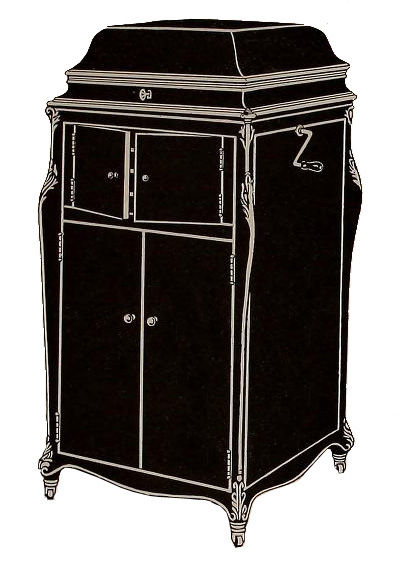Camden, New Jersey
In the earliest years of the last century, a new company was formed to market the newest technological marvel, the Gramophone. The Gramophone was invented by a German immigrant, Emile Berliner. He marketed the instrument with some success, but the machine had a reputation as being a toy rather than a serious addition to the home due to the fact that the turntable had to turned by hand while the record played. Spring motors, while seemingly simple, were more complicated than commonly imagined. The spring had to hold enough energy to power the mechanism for the time it would take to play a record. Even though early records were only 7" in diameter, it was difficult to design a suitable motor that was affordable and quiet.
A young New Jersey machinist, Eldridge R. Johnson, was engaged to design and build a suitable spring motor for the Gramophone. He succeeded and was awarded a contract to manufacture complete Gramophones. He built a much larger machine shop to keep up with the rapidly increasing orders. The metal horns and wooden baseboards were provided by other established factories in the area, and were combined with motors, sound boxes and other machined parts made in Johnson's shop.
Business grew extremely rapidly as the Gramophone became the new sensation. With success came many problems, not the least of which was intrusion into the field by other individuals. Both Berliner and Johnson wished to continue their successful work together. Since Berliner held the basic patent on the Gramophone and Johnson held several patents on improvements that he invented, many court trials were held to determine who was entitled to build what. A court ruling in 1900 decreed that Johnson was not entitled to use the word "Gramophone" in association with his product, so he called it the "Victor Talking Machine". Finally it appeared that Johnson had a clear field to manufacture disc talking machines based upon Berliner's patent and his improvements. The Victor Talking Machine Company, incorporated on October 3, 1901, purchased Mr. Johnson's assets.
On October 5, 1901, the President of The Victor Talking Machine Company, John Cross, stepped down in order for the company to be able to offer that position to Mr. Johnson who accepted and remained in that position for another 25 years.
The factory grew at an incredible rate through the first world war, but as radio became popular demand for phonograph wained. Eventually Victor, in 1929, was purchased by The Radio Corporation of America. Radio dominated the output of the company until television became popular.
For a more detailed look at various Victor styles, use the navigation menu at the top of the page.
